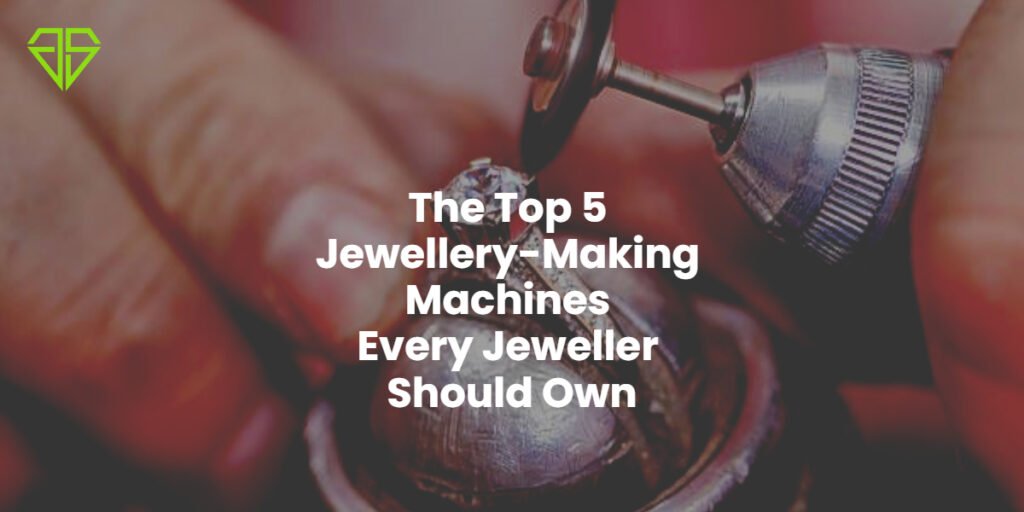

Gold melting machines are important for any jewellery workshop or goldsmithing operation, helping transform raw gold into workable material for crafting beautiful, intricate pieces. These machines streamline the melting process, allowing jewellers to efficiently and safely achieve the ideal molten state for casting, alloying, or reworking gold.
Choosing the right gold melting machine is crucial for ensuring quality, reliability, and efficiency in production. With the right machine, jewellers can achieve the accurate temperature control needed to avoid overheating or underheating, which is the key to maintain the wholeness and quality of the gold.
How Does a Gold Melting Machine Work?
Gold melting machines operate by using high-powered heating elements to generate enough heat to bring gold to its melting point, which is approximately 1,064°C (1,947°F). Here’s a step-by-step breakdown of the process:
- Prepare the Machine: Set up the gold melting machine according to the manufacturer’s instructions. This usually involves plugging it in, setting temperature controls, and ensuring proper ventilation.
- Place the Gold in the Crucible: The crucible is a heat-resistant container that holds the gold. Make sure the crucible is clean and designed for high temperatures, as it will need to withstand the heat without cracking.
- Heat the Gold: Set the machine to the appropriate temperature for melting gold. Most modern gold melting machines have digital controls, allowing for precise temperature adjustment. Once the gold reaches its melting point, it will turn into a liquid.
- Pour the Molten Gold: When the gold is fully melted, carefully pour it into the desired mould or casting setup. This requires steady hands and proper tools, like tongs and heat-resistant gloves, to avoid spills or burns.
- Allow Cooling: After pouring, the molten gold will solidify as it cools, taking the shape of the mould. Once it has hardened, you can remove it from the mould and proceed with other jewellery-making or refining processes.
Types of Gold Melting Machines
Gold melting machines vary in size, heating methods, and functionality. Here are the most common two types:
- Induction Melting Machines: These use electromagnetic fields to generate heat and melt gold. Induction machines are popular because they heat the metal quickly and uniformly, making them ideal for professional use.
- Resistance Melting Machines: Resistance melting machines use electrical resistance to create heat, which then melts the gold. They are often compact and suitable for small workshops or home-based jewellery-making.
Benefits of Using a Gold Melting Machine
Gold melting machines offer several advantages, especially for jewellers:
- Precision: These machines allow for precise temperature control, which is essential for melting gold without overheating it. Overheating can affect the quality of the gold, so precise temperature control is vital.
- Efficiency: Gold melting machines heat quickly and evenly, allowing for faster melting times compared to traditional methods. This improves productivity, especially when melting large amounts of gold.
- Safety: Most machines come with built-in safety features, such as automatic shut-off systems that prevent overheating. This helps protect both the user and the equipment.
- Consistency: The controlled environment of a gold melting machine ensures consistent melting results, which is important when producing high-quality jewellery pieces.
- Versatility: Some gold melting machines can be used for other metals, making them versatile tools in a jeweller’s workshop.
Choosing the Right Gold Melting Machine
When selecting a gold melting machine, consider these factors:
- Capacity: Choose a machine that matches your needs. Smaller machines are great for personal or small-scale work, while larger machines can handle bigger projects.
- Temperature Control: Look for a machine with precise temperature controls, ideally digital, so you can monitor and adjust the temperature as needed.
- Safety Features: Make sure the machine has essential safety features like overheating protection, automatic shut-off, and a sturdy design that minimises the risk of accidents.
- Type of Heating Method: Decide whether you need an induction or resistance machine based on your melting requirements and workspace setup.
Final Thoughts
Gold melting machines are an essential investment for anyone serious about jewellery-making. They provide precision, efficiency, and safety, making the process of melting gold much easier and more consistent. By understanding the basics of how these machines work and choosing the right one for your needs, you can enhance your craft and create high-quality jewellery pieces with ease.
Why Clients Trust Jewel System and Services’ “Gold Melting Machines”?
For jewellery manufacturers, aiming to enhance their production capabilities, reliable and high-quality equipment is essential. Jewel System and Services’ gold melting machines provide the accuracy, durability, and ease of use that make them an excellent choice for jewellers, who’re seeking to optimise their operations. Their machines are designed with safety features, and crafted to handle daily use, making it both a long-term investment and an essential in any jewellery workshop.
By investing in a high-performing “Gold Melting Machine” from a trusted company, jewellery makers can focus on creating quality pieces and meeting demand with confidence. Jewel System and Services’ commitment to quality and customer support ensures that one can get not only a right choice of machine, but also a right choice of partner who is dedicated to your success in jewellery manufacturing.
For more information on how these machines can transform your workshop, reach out to learn about the solutions Jewel System and Services offers for modern jewellery production.

